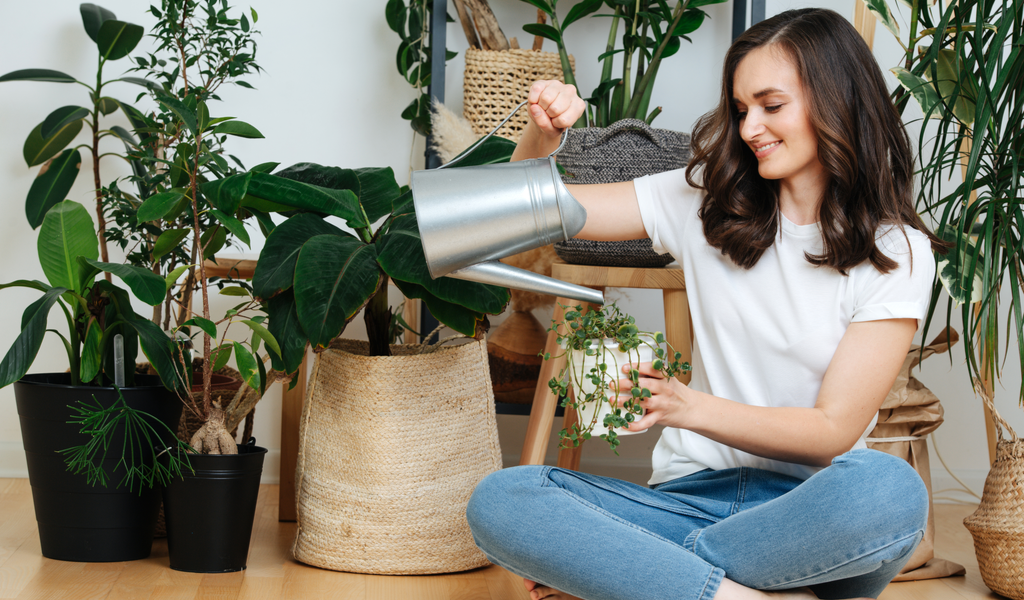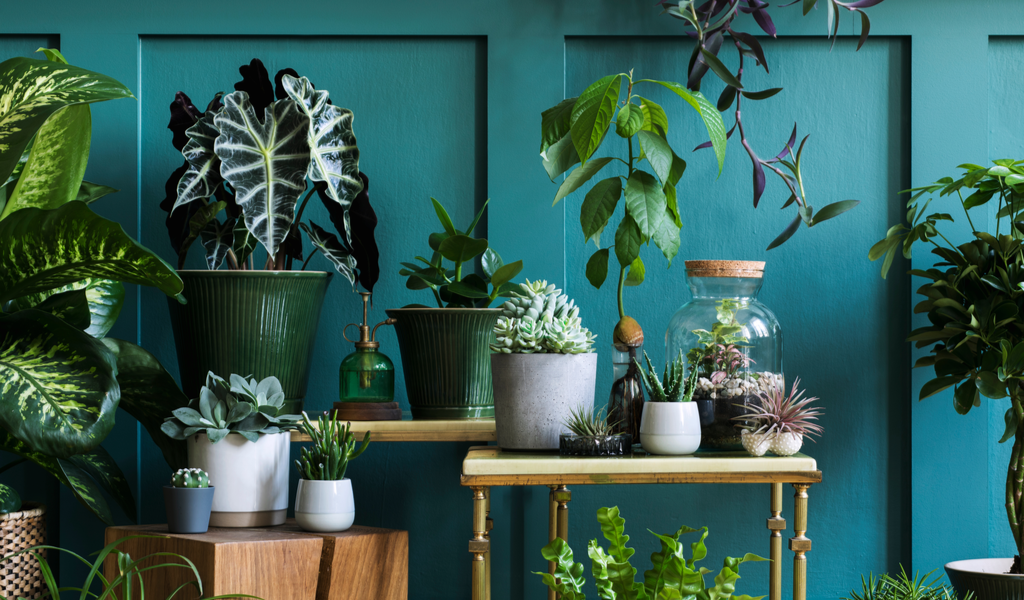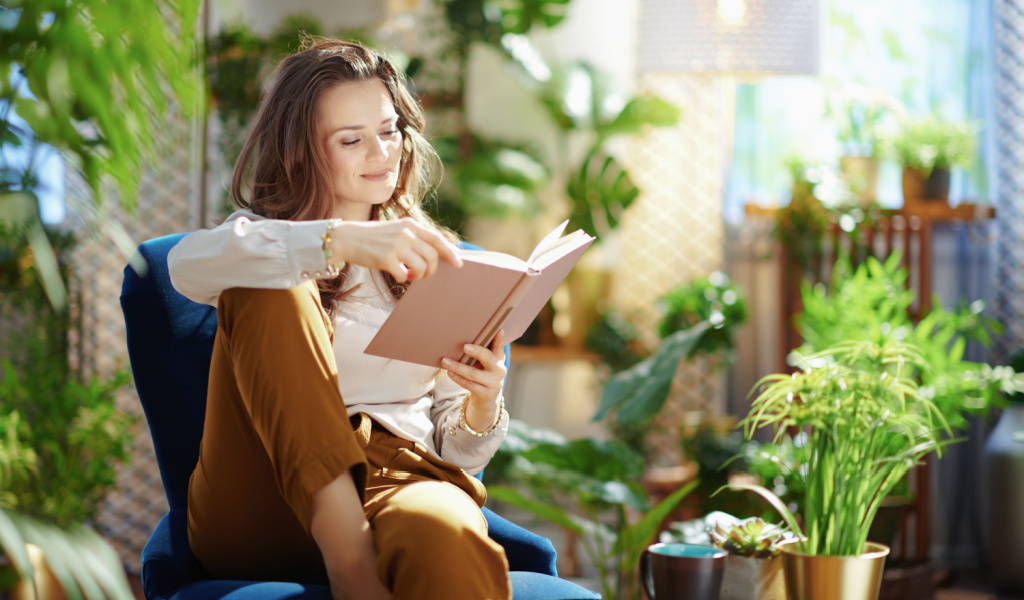Having lots of plants in your house isn’t just a boost for the home’s aesthetics, it also provides a host of benefits for the people who live there. From improving the quality of air in your abode, to creating a more relaxing, natural space that promotes calmness and relaxation – plants provide many positives to your mind and body.
So, if you’re a proud plant parent, go on and add more green babies to your brood. Make sure to set them up in the appropriate places around your house so they thrive (do your research about how much sun and water each plant needs). Don’t let anyone tell you that you’re going overboard! If they insist, here are 6 reasons you can give them for why it’s healthy to have lots of plants in your house.

Plants Make the Air Quality Better
You already know that the air quality outside isn’t that great, what with all the climate change and pollution – but you might not have expected to hear that, according to experts, indoor air is actually often a lot worse than outside!
Having plants in your home can help combat this issue. Just like outdoor plants convert carbon dioxide into new oxygen and help purify the air, indoor plants can do the same for your home on a smaller scale. The right plants can neutralize harmful airborne substances such as benzene and formaldehyde that manage to make their way into your home no matter how cautious you may be!
Still not convinced? How about the fact that NASA adds plants to its international space station to control air quality? If it’s good enough for the world’s most popular space agency, it’s good enough for me!
They May Help Increase Immunity
Having lots of plants in your house isn’t just going to make it look pretty, but it could also help keep you from falling sick. According to TreeHugger.com, plants can provide protection against certain illnesses by increasing the humidity level indoors through a process called transpiration. They say this is especially important during the drier months when humidity dips very low.
Another study conducted by the Agricultural University of Norway found that adding some healthy plants to your collection can reduce your chance of developing a cold, sore throat, or a dry cough. The researchers state that higher “absolute humidity” could help wipe out the spread of the flu virus.
They Increase Workplace Performance
There are several sources that say having indoor plants can boost your mental health. In relation to your productivity and work, “environmental psychologists” claim that having indoor greenery can not only increase the efficiency of your work but also increase your state of mind while doing so. Who doesn’t want to do a better job and also be happy about it?
According to Phys.org, offices that have lots of indoor plants lead to “an improved emotional state, reduced negative mood states, reduced distraction, increased creativity, and improved task-performance.” Since most of us are working from home nowadays anyway, we can assume that the same applies to your home office!
Your IQ Could Increase
Did the great minds of history have lots of indoor plants? Maybe they did because Scientific American claims that indoor plants can actually make you smarter! This follows closely along with the previous point we talked about with increased workplace performance being related to having more foliage around you.
However, Scientific American gets more specific when talking about something called “directed attention”. This refers to the amount of time a person can remain focused on a single task – such as staring at a spreadsheet or writing code. According to them, natural greenery can help regenerate our directed attention capacity, which is notorious for dropping off quickly. To make this claim more legitimate, they provide a study that found that subjects in a room with plants performed better when presented with cognitive tests as opposed to those who were in a different room.

They Boost Recovery
Ever thought about the reason behind bringing flowers to a loved one in the hospital? Yes, it can make their drab hospital room look a bit prettier, but there may be a deeper meaning to this custom that you haven’t thought about. In fact, it might even be a kind of medicine that aids in their quick recovery!
That’s right! According to TreeHugger.com, a study has revealed plants to be “noninvasive, inexpensive, and effective complementary medicine for surgical patients.” This study, which has actually been posted on the US National Library of Medicine website, states that when half of a group of 90 patients who had just gone through a hemorrhoidectomy procedure were placed in a room with plants, they reported back lower instances of post-operative blood pressure, pain, and anxiety than those who were given a room without plants. In conclusion, the study advises that “Health care professionals and hospital administrators need to consider the use of plants and flowers to enhance healing environments for patients.”
They’re Inexpensive and Safe
Plants are (hopefully) a one-time investment. Apart from water, which doesn’t cost much, all they require are your careful care and attention every few days – talk about low maintenance! You can buy them as mature plants or grow them from tiny seedlings, the choice is up to you. And you don’t really need that many to start seeing the benefits of having greenery around.
Compared to buying medication or enrolling in therapy sessions, having houseplants is relatively cheap (not that we’re saying having indoor plants is a replacement to physical or mental therapy if you really need it!). One thing’s for sure; there are little to no side effects to having houseplants!
In fact, Bayer, a company that makes products relating to pain relief and insect control, even joins in on the indoor plant bandwagon. According to them, one should have at least 15 plants (that are in at least 6-inch diameter pots) for a space that is up to 1,800 square feet. They say for benefits such as stress and fatigue reduction, you may need one large (8-inch diameter) potted plant for every 129 square feet.



